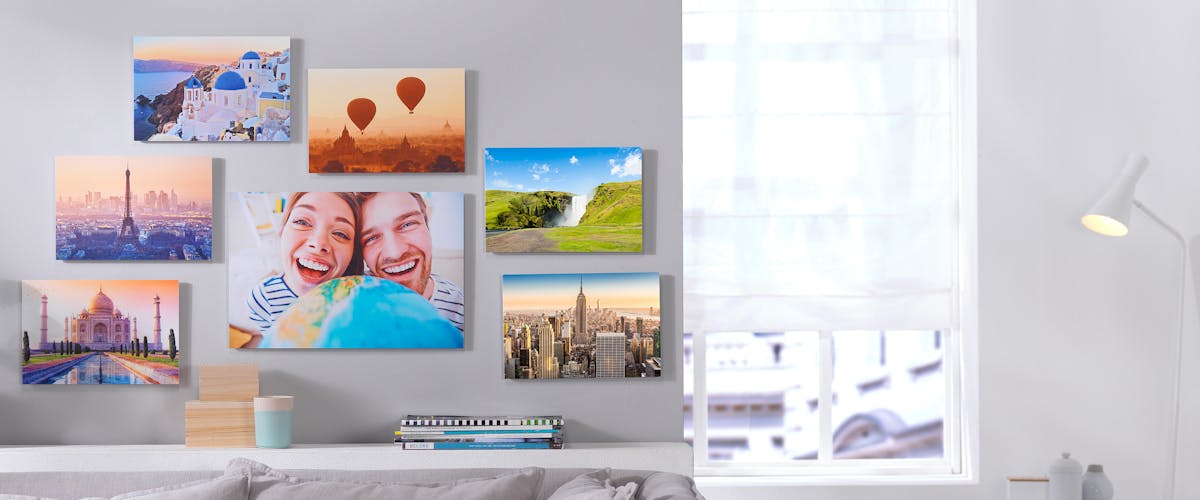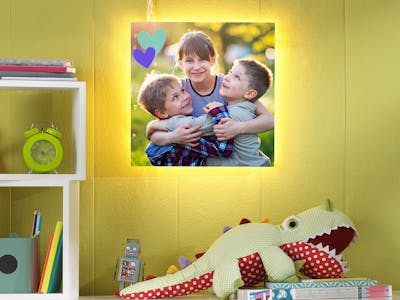
Create beautiful picture wall with memories worth printing.
The lighting conditions and wall art - what do I have to bear in mind?
The disappearing contrast: Pictures in darker rooms
If you mount your Wall Art in a room that is rather dark, for example due to insufficient daylight or rather dull lamp bulbs, then you will quickly notice that the contrasts of the photo are no longer that striking. A wall art, which looks sharp when viewed in good light, now seems somewhat dull and lack the dynamic contrast you love about so much. This is down to poor lighting.
To get around it, select an image that contains plenty of contrasts. This is the case when both the dark and the light areas in the image stand out clearly from one another. If necessary, you can use the image processing tools in the Pixum Photo World software to enhance the contrast artificially to meet the lighting situation in the room. Here is how you can do this:
- run the Pixum Photo World software and choose the Wall Art material
- select your favourite photo
- start by double-clicking on the photo
- the photo will now load in the editing tool of the software. Select the "Adjustments" tab and then "Brightness & Contrast"
- confirm editing and proceed with the order
- there's also a Digital Photo Optimization automatically running in the printing lab - so be sure, your favourite photo will turn to a stunning Wall Art with Pixum!
Muted colours for darker rooms
If your shot is more muted and not too brightly coloured, it is ideally suited for a rather dark room. Since the pictures would be quite dark anyway, they naturally show a rather high degree of contrast and come into their own element. If, on the other hand, your wall art is predominantly made of light and clear elements, you should hang it up in a bright room.
Please note: We do not recommend hanging up a picture on a wall that faces a window, if the picture has a reflective surface. This applies to the materials with glass-like finish, such as Gallery or Acrylic Print. Otherwise, the picture can only be seen in part because of distorting reflections.

